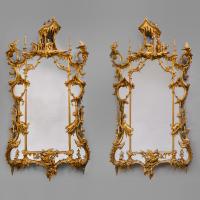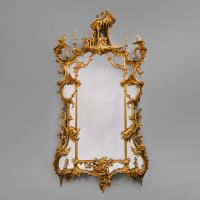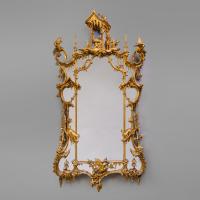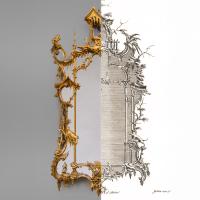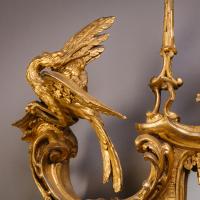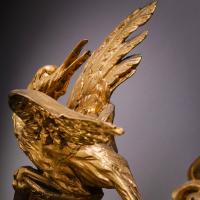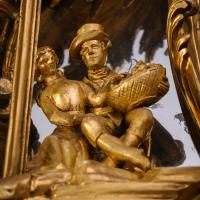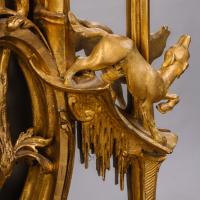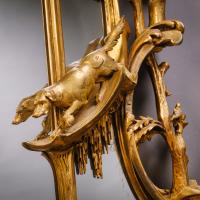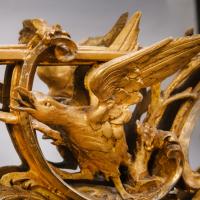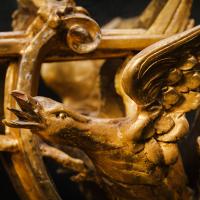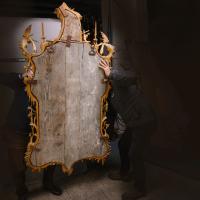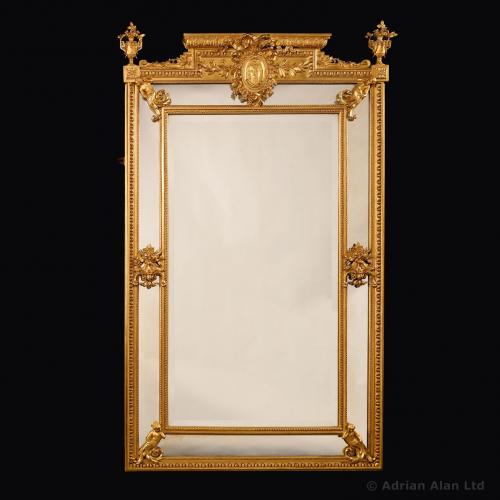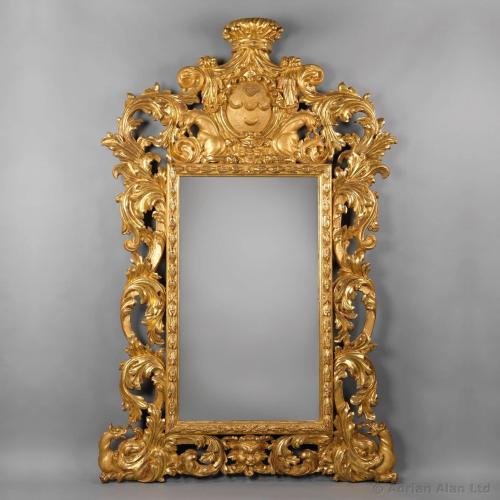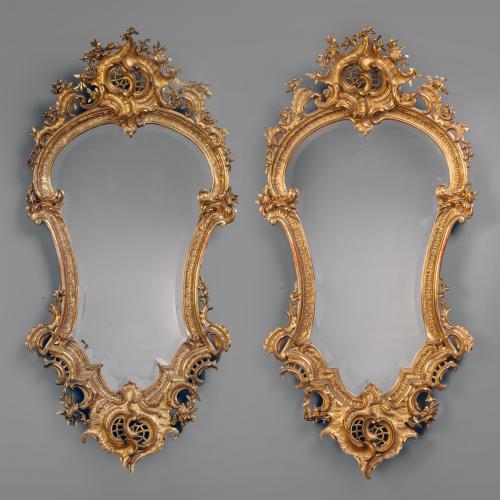
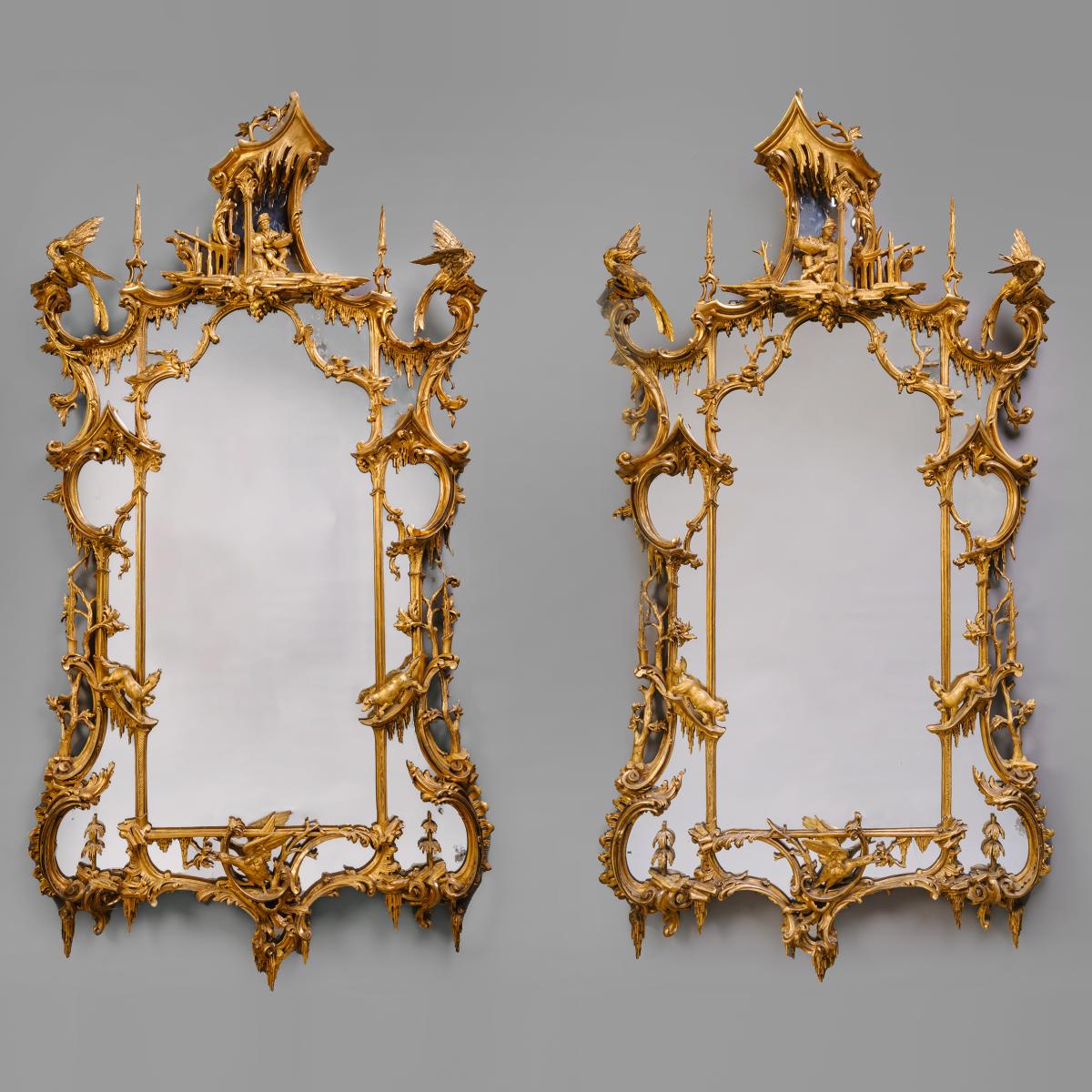
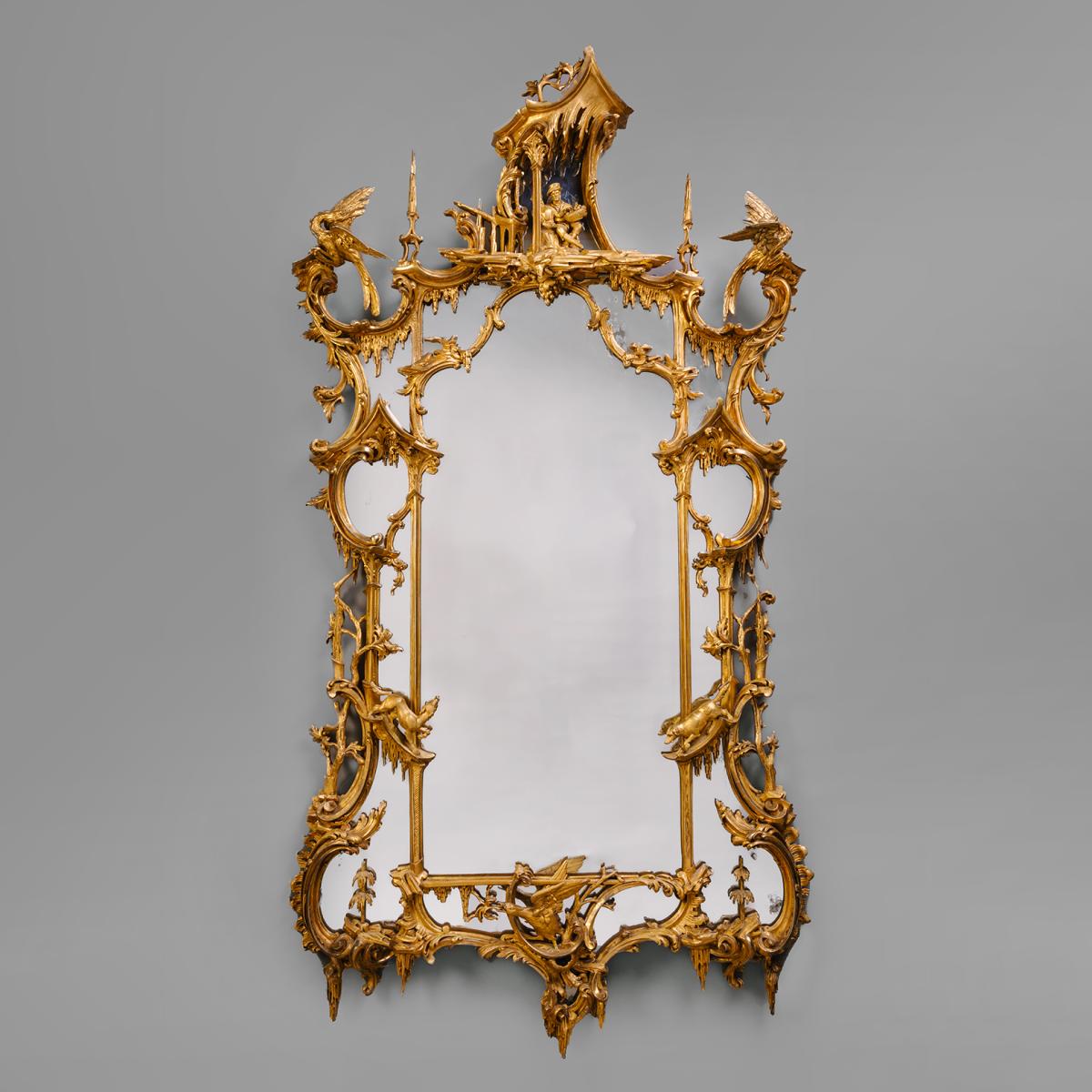
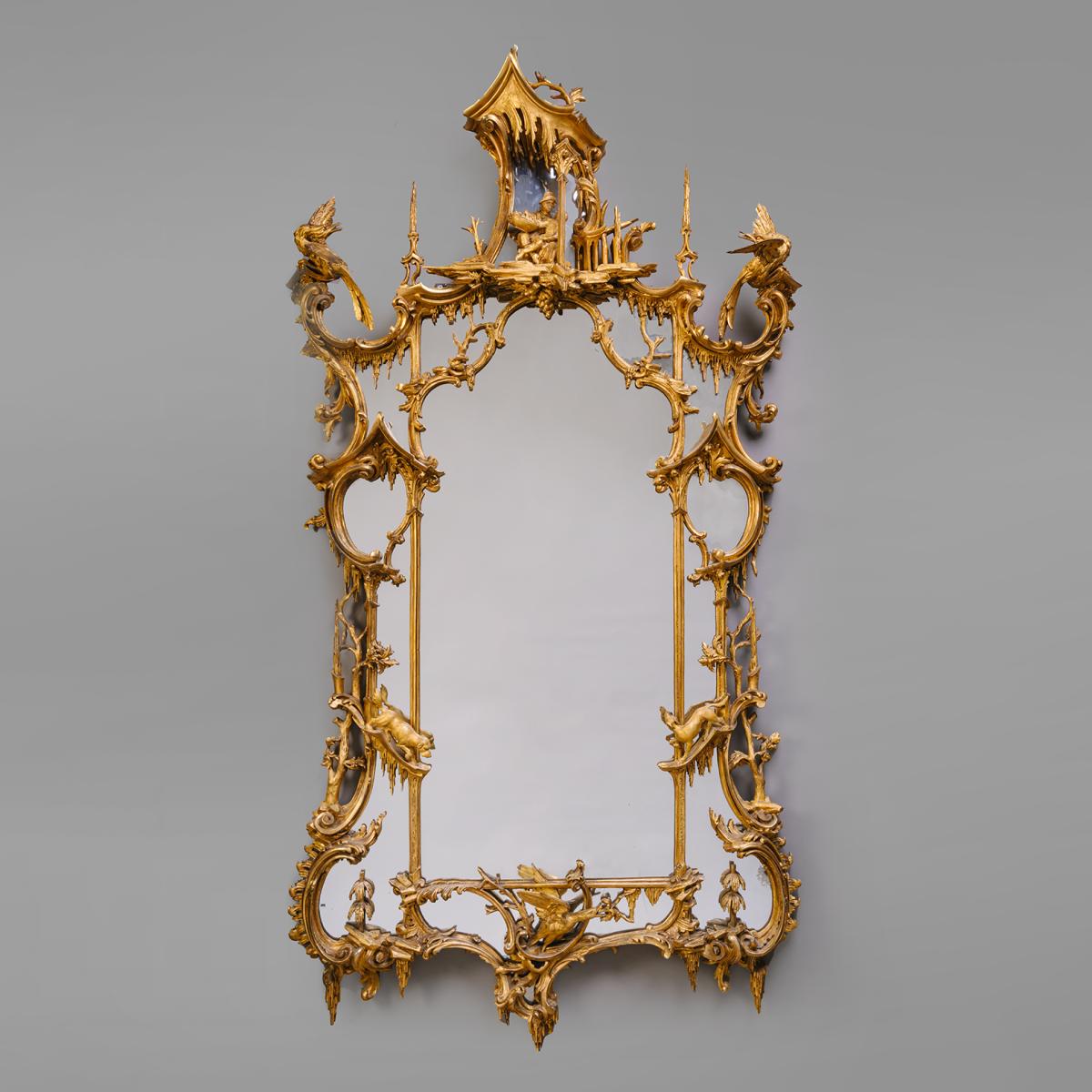
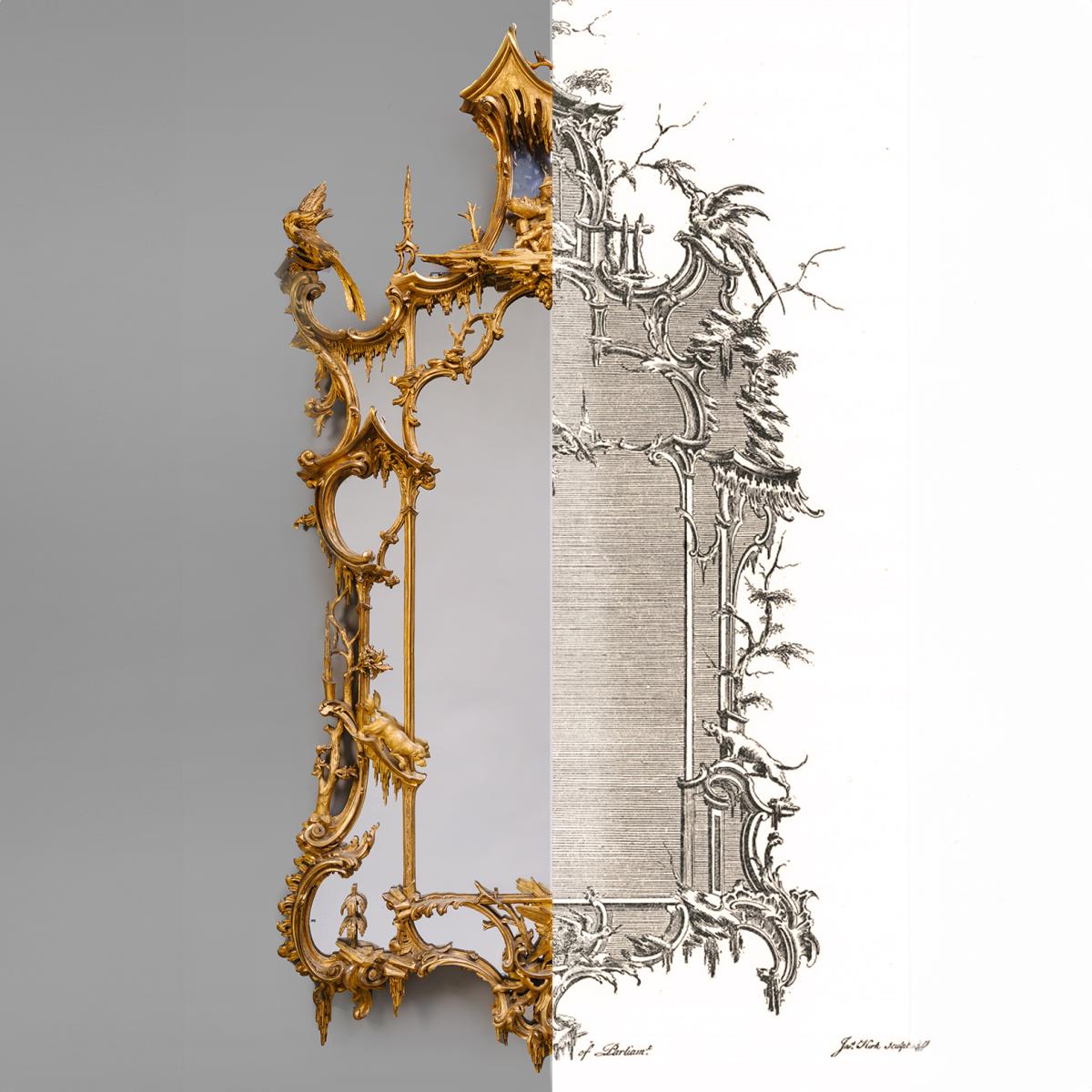
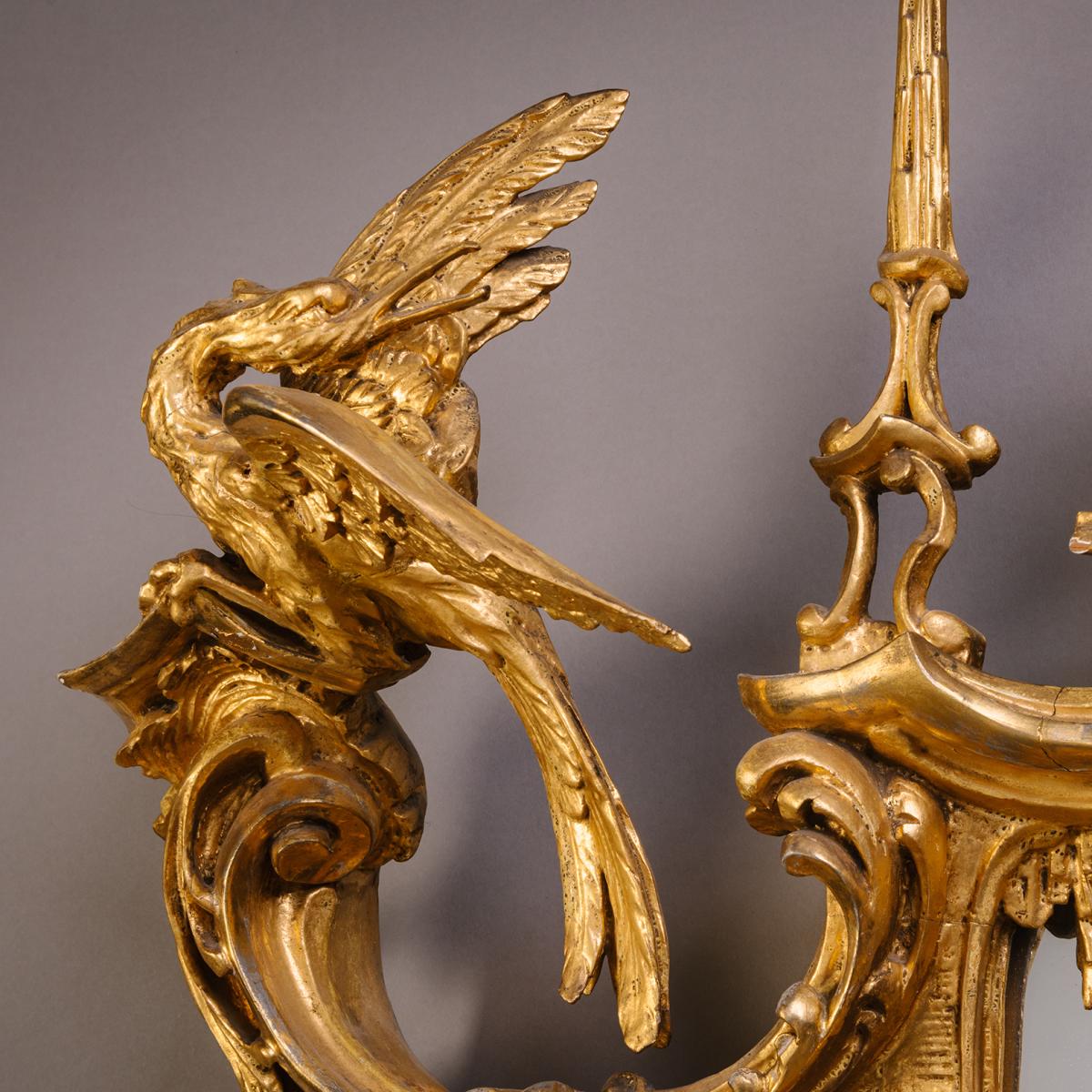
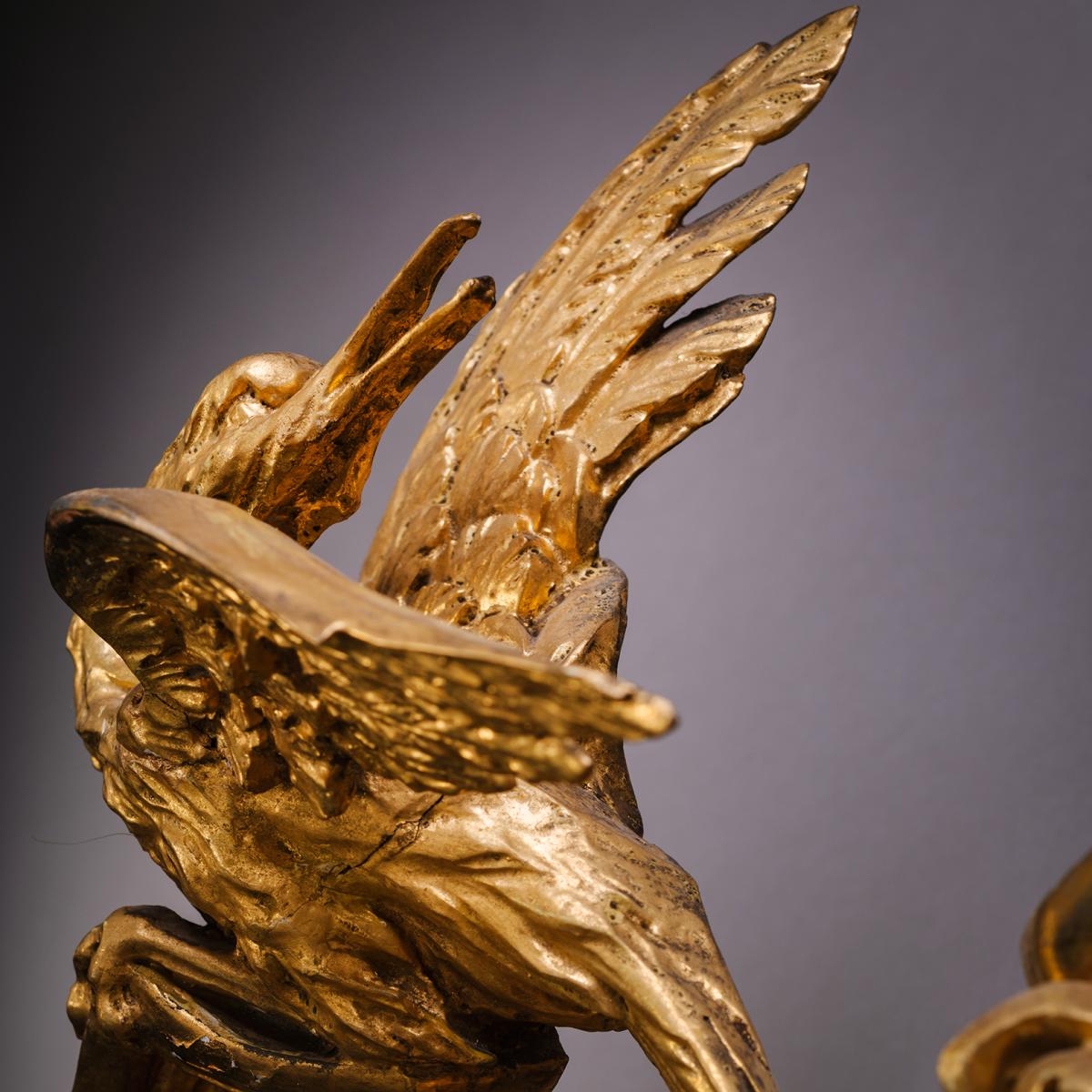
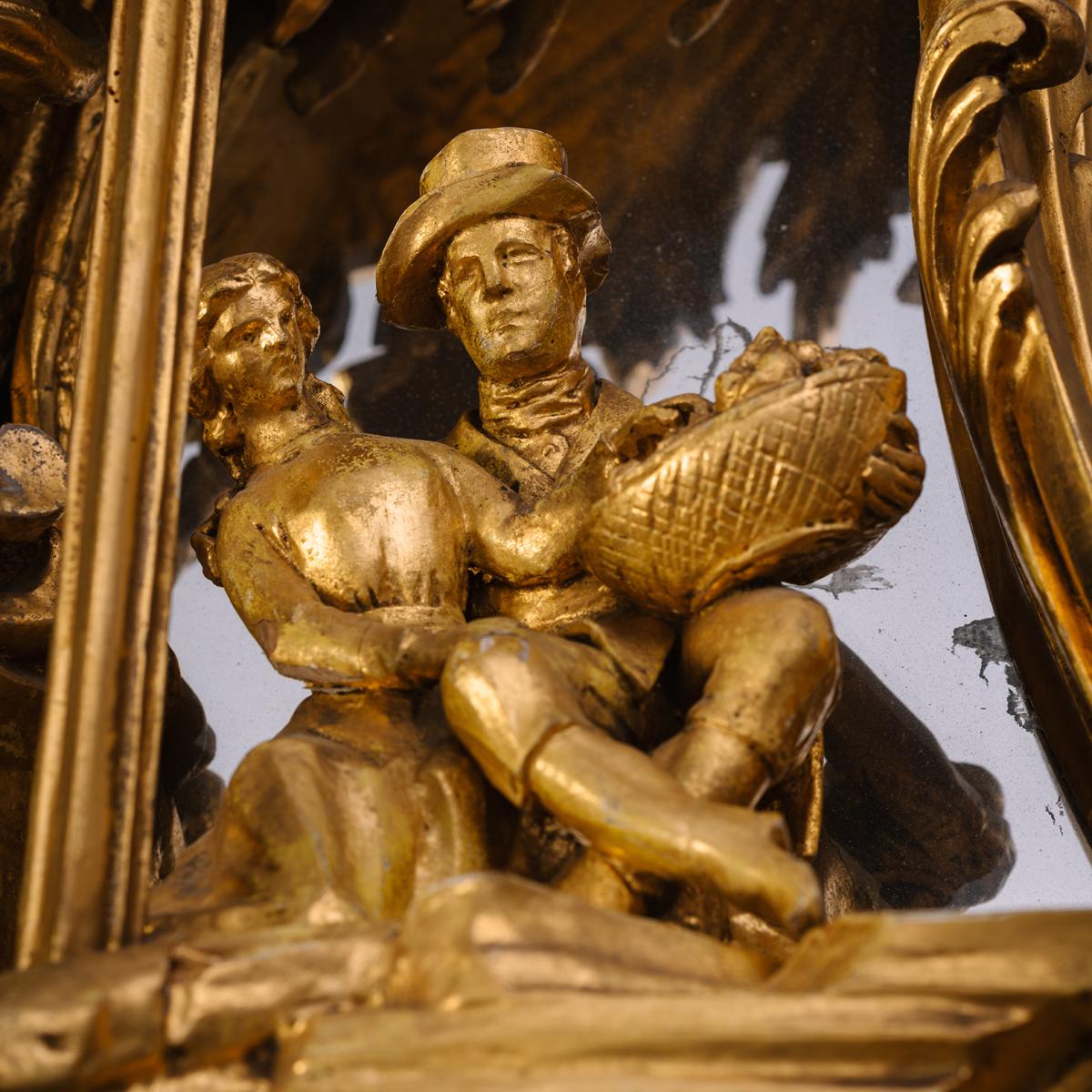
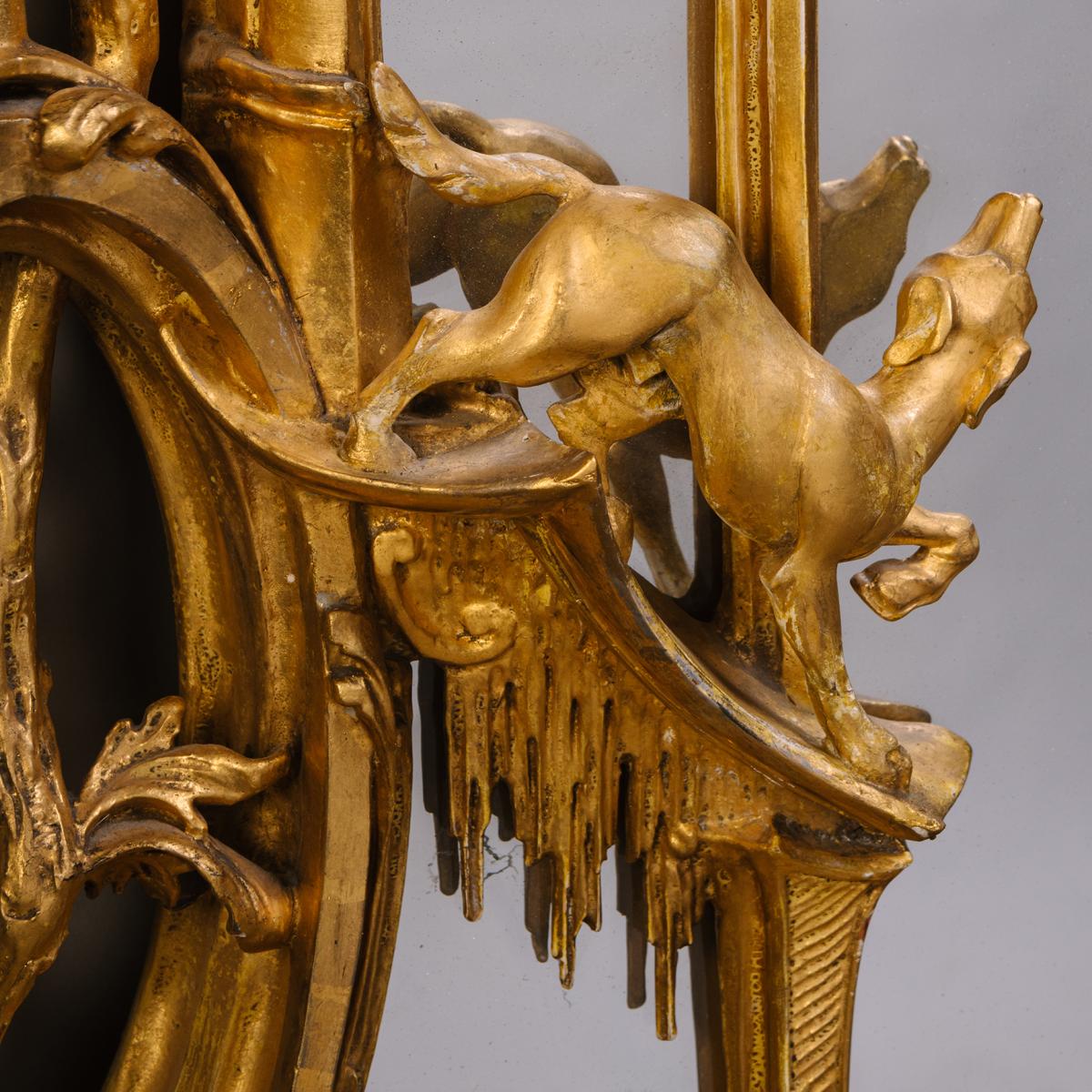
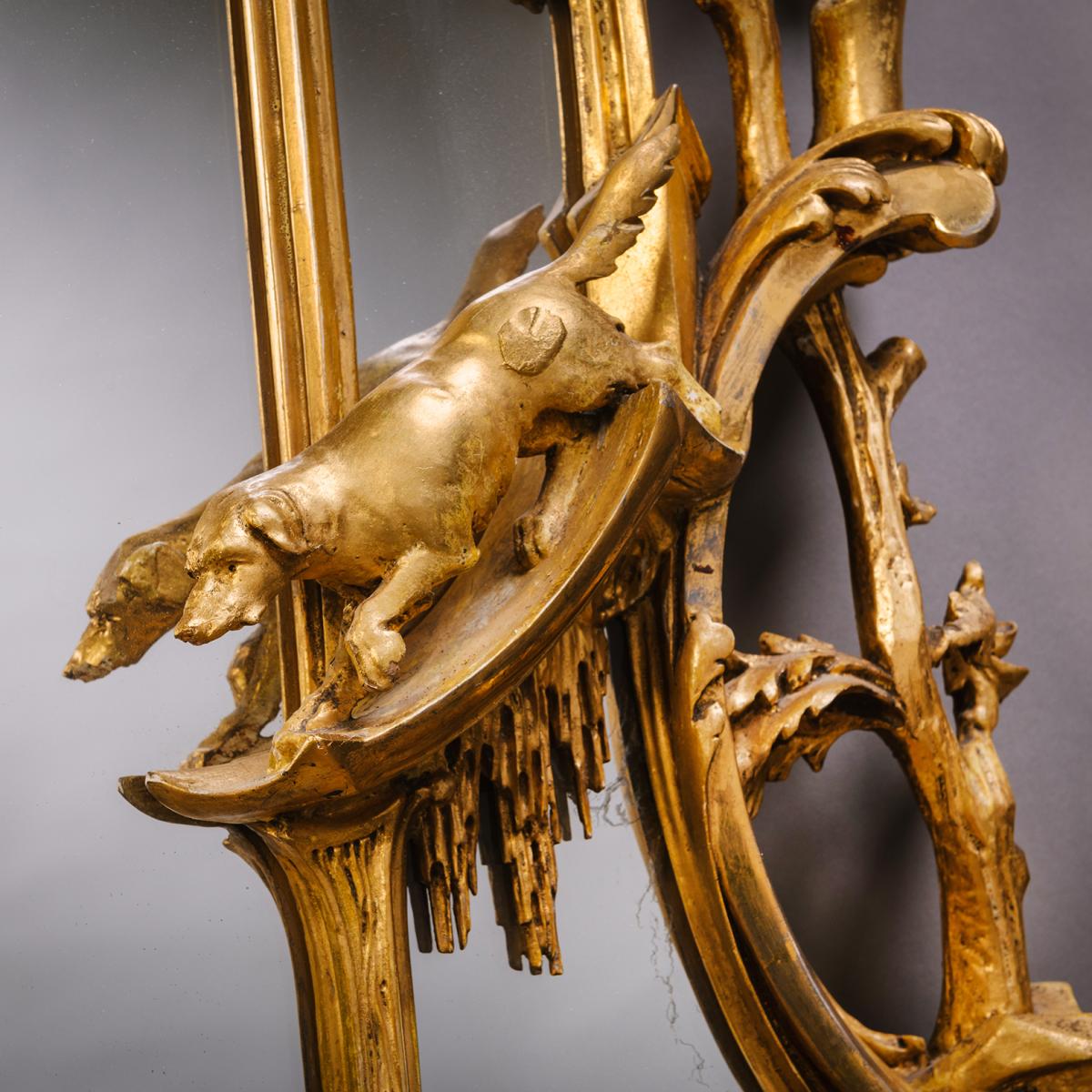
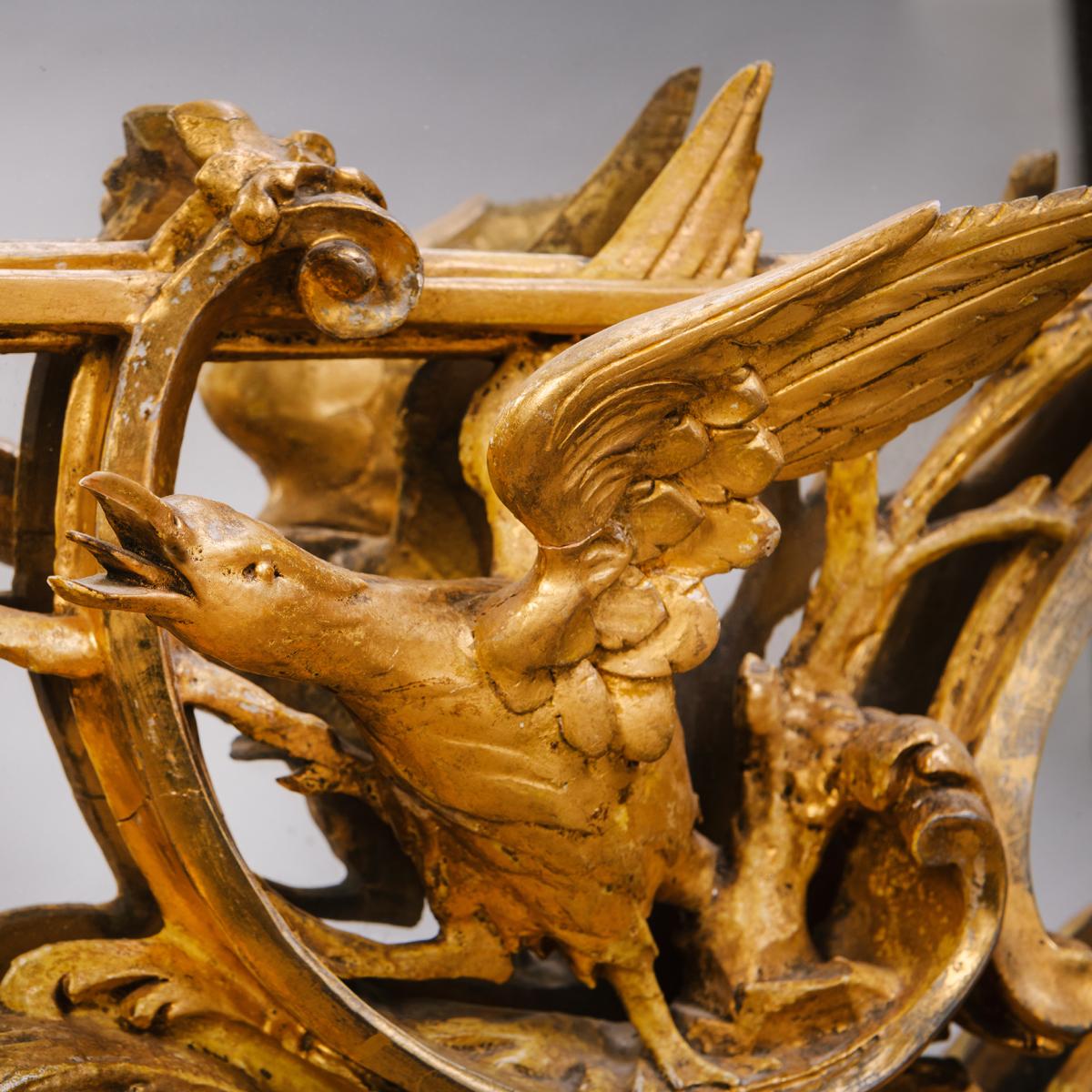
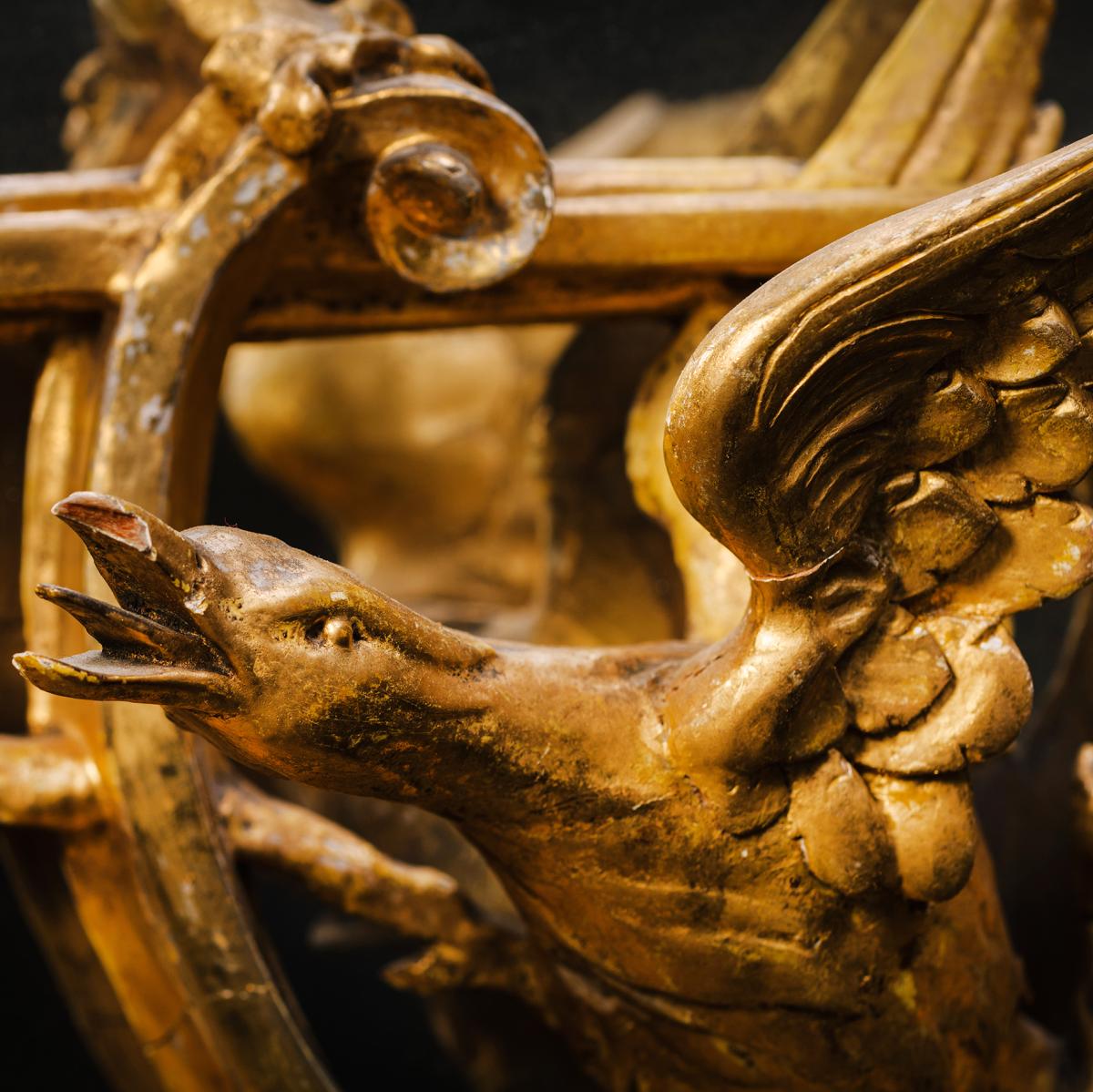
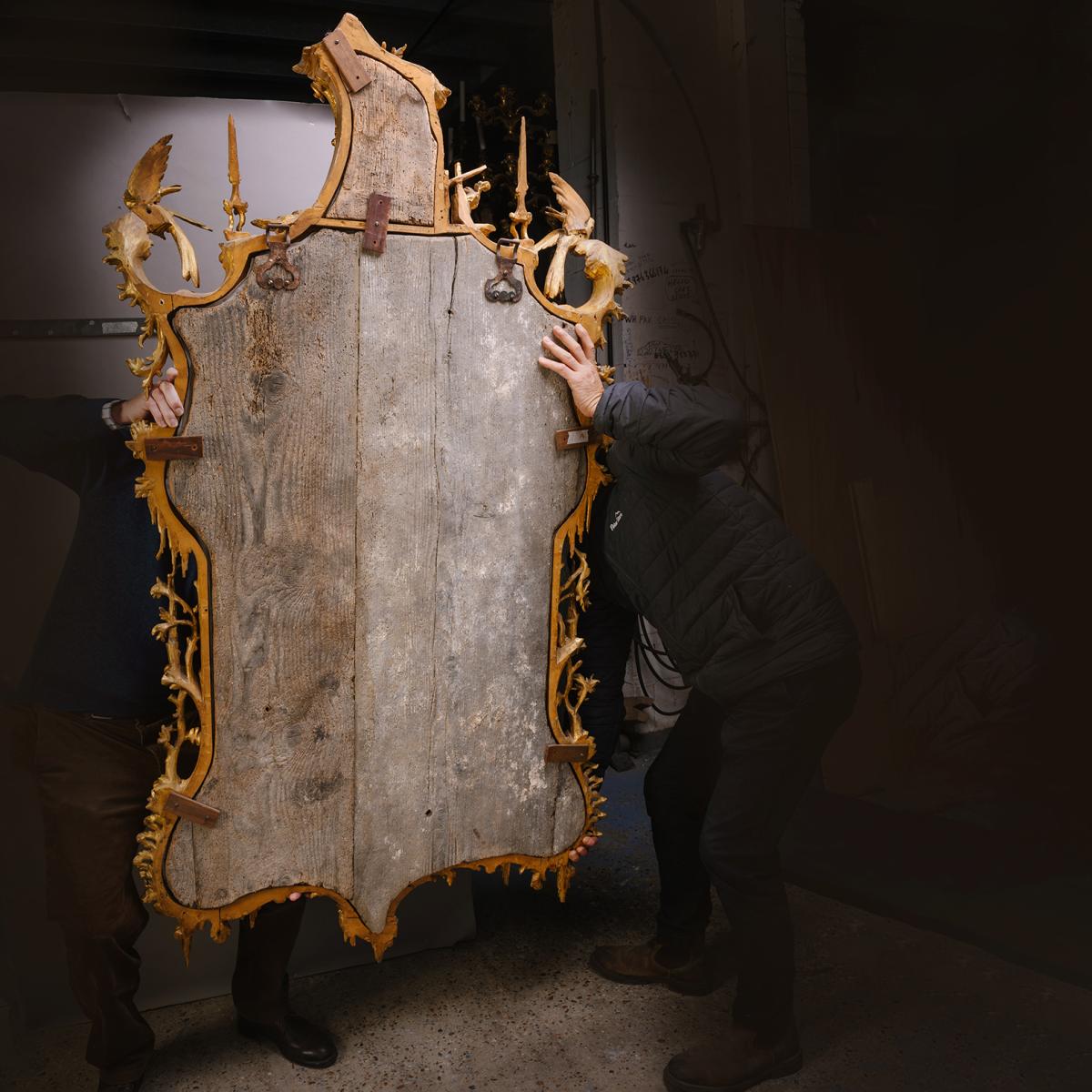
Price on application
This object is eligible for a Certificate of BADA Provenance
The BADA Standard
- Since 1918, BADA has been the leading association for the antiques and fine art trade
- Members are elected for their knowledge, integrity and quality of stock
- Our clients are protected by BADA’s code of conduct
- Our dealers’ membership is reviewed and renewed annually
- Bada.org is a non-profit site: clients deal directly with members and they pay no hidden fees
A Magnificent Pair of George II Style English Carved Giltwood Rococo Wall Mirrors After A Design By Thomas Johnson.
Of large proportions, each mirror having a cartouche-shaped plate within a profusely carved and pierced branch-entwined frame with stylised acanthus foliate rocaille and ‘C’-scroll decoration, architectural motifs and running dogs, surmounted by an asymmetrical pagoda form cresting with rockwork spires and a seated rustic couple holding a basket, flanked by confronted Ho-Ho birds, with a conforming asymmetrical apron of acanthus and waterwork icicles centred by a perching bird.
This magnificent and ornate pair of English wall mirrors or ‘pier glasses’ are refined and reduced from a design by Thomas Johnson (1723–1799) first published in 1756 and included in his ‘Collections of Designs’ (1758), plate 4, and republished in his ‘One Hundred and Fifty New Designs" (1761) as plate 22.
Pier Glasses were designed to be placed on the wall or 'pier' between windows; as well as forming part of a decorative scheme they provided an important functional use, creating a reversal of dynamic with the windows at night, reflecting and maximising the light given off by candles or oil lamps. Johnson’s asymmetrical design creates a sense of fluidity and lightness to the mirrors, employing ‘contraste’ in the placing or absence of elements, to create a stylised form, which through the dynamic tension of its constituent parts instils the mirrors with a sense of playfulness and vitality.
In London throughout the 1740s and 1750s there developed a great enthusiasm for the whimsical Rococo style, and it rapidly became the height of fashion, popularised, and disseminated throughout the country and further afield by cabinetmakers’ 'Books of Prices', and 'Directories'. The second half of the 19th century saw a revival of the Rococo style in England and many designers and furniture makers turned once again to Chippendale’s ‘Director’ and designs by Matthias Lock and Thomas Johnson for inspiration, with fine examples based on modified designs or specific plates.
Thomas Johnson’s designs, executed in a vigourous picturesque manner, are often inspired by the work of earlier French designers, transposing motifs taken from engraved ornament by Jean Bérain, Daniel Marot, William de la Cour, J. B. Toro and Francis Barlow. It is therefore ironic that he was a member of the Anti-Gallican Association, founded 'to oppose the insidious arts of the French Nation', even dedicating his publication ‘One Hundred and Fifty New Designs’ in 1761 to Lord Blakeney, Grand President of the society. His talent was however undeniable, and his exuberant imagination informed his designs with recurrent motifs including, exotic birds, Chinoiserie and rustic figures and motifs from Aesop's fables. The importance and appeal of his work is evident in that Chippendale included several of his Rococo designs in the Third Edition of the Director.
English, Circa 1870.
Dimensions
height : 190 cm 75 inches Width : 102 cm 40 inches Depth : 26 cm 10 inchesStock number
B77660The BADA Standard
- Since 1918, BADA has been the leading association for the antiques and fine art trade
- Members are elected for their knowledge, integrity and quality of stock
- Our clients are protected by BADA’s code of conduct
- Our dealers’ membership is reviewed and renewed annually
- Bada.org is a non-profit site: clients deal directly with members and they pay no hidden fees


